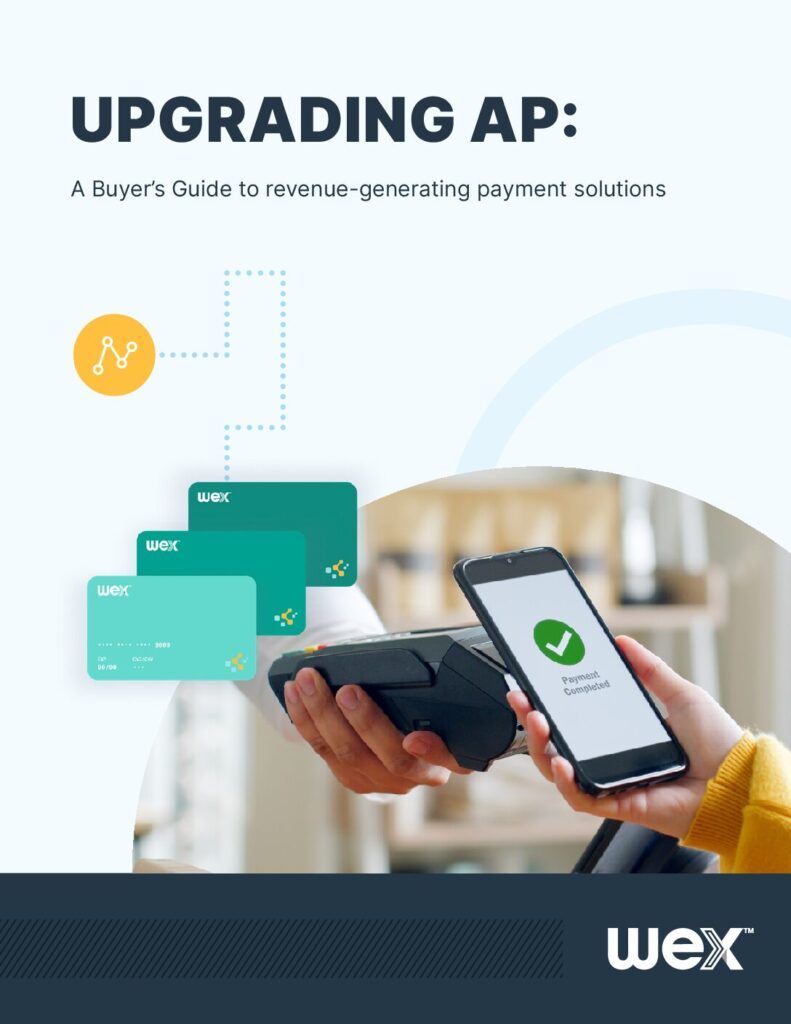Stay connected
Subscribe to our corporate payments blog to stay on top of payment innovations.

Running a business comes with its fair share of challenges, but managing payments shouldn’t be one of them. Having the right payment solution can make all the difference in improving your cash flow and relationships with suppliers and customers.
According to a recent PYMNTS Intelligence report, late payments were a top issue for small to medium-sized businesses, disrupting accounts receivables and negatively impacting their supplier relationships.
But with so many options available, how do you determine the best payment solution for your business needs? Let’s look at some of the most popular options, their pros and cons, and see which solution is emerging as a transformative option for businesses today.

Download our AP Buyer’s Guide to compare options, see how virtual cards stack up, and find the best fit for your accounts receivable and payable workflow
For decades businesses relied on checks as the primary method for payments. While still widely used in some industries, their popularity has waned due to inefficiencies.
Automated Clearing House (ACH) transfers are electronic payments that allow businesses to send money directly to a supplier’s or employee’s bank account.
Widely accepted across industries, credit and debit cards provide convenience and speed.
Wire transfers offer a secure way to send large sums of money quickly, often internationally.
Virtual cards are digital payment tools tied to a business’ bank or credit account. They’re generated for single or recurring transactions and can be customized with spending limits.
Get your free infographic to learn more. Download now!
The best payment solution for your business depends on several factors, including:
Click “Subscribe” above to sign up for email alerts.
Virtual cards address many of the pain points associated with traditional payment methods. Let’s dive deeper into why they stand out:
Each virtual card is generated with a unique 16-digit number that can be tied to a specific transaction or vendor. This reduces the risk of unauthorized charges or data breaches. Even if a virtual card number is compromised, it cannot be reused elsewhere.
Unlike other payment methods that require manual tracking or reconciliation, virtual cards provide instant visibility into spending. Businesses can track transactions, assign them to specific projects, and simplify the accounting workflow. Paired with an automated AP solution, virtual cards offer a payment process that is streamlined, allowing you to focus on business growth and strategies.
Virtual cards allow businesses to set spending limits, expiration dates, and usage restrictions. This level of control minimizes overspending and ensures that funds are used appropriately.
By using virtual cards, businesses can ensure timely payments, reducing friction or unnecessary delays with suppliers. Additionally, the detailed transaction data provided makes it easier to resolve disputes or answer any inquiries that your suppliers may have.
Ultimately, choosing the best payment solution requires careful consideration of your business’ needs. While traditional payment methods still have their place, innovative solutions like virtual cards are redefining how we pay. They offer a future-ready, scalable option that allows businesses to operate smarter, not harder.
Contact us today to learn more
For more insights and updates on corporate payments, check out:
Stay up to date on the latest in business payments by subscribing to our blog! Simply hit the “Subscribe” button above or submit your email address in the form below.
The information in this blog post is for educational purposes only. It is not legal, tax or investment advice. For legal, tax or investment advice, you should consult your own legal counsel, tax, and investment advisers.
Subscribe to our corporate payments blog to stay on top of payment innovations.